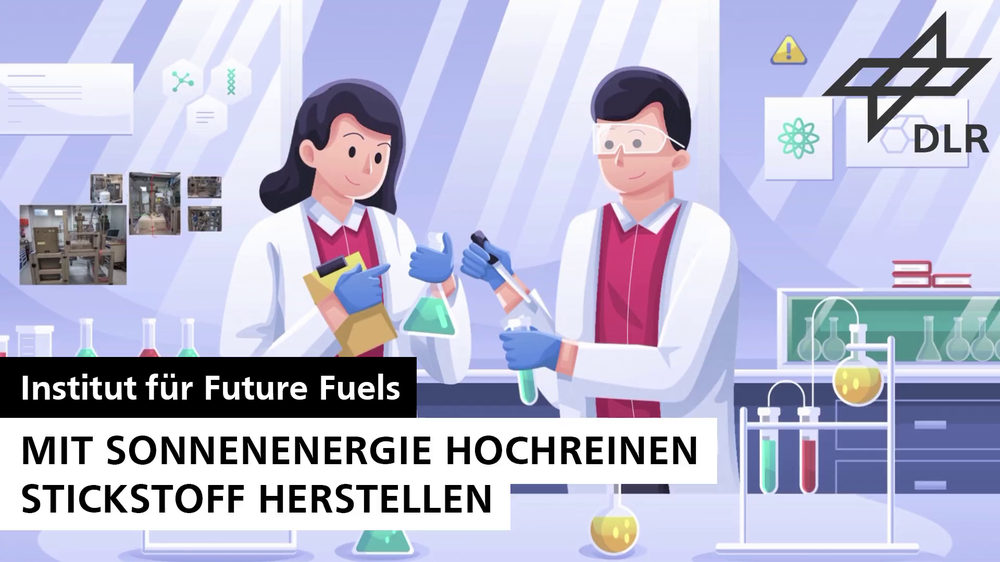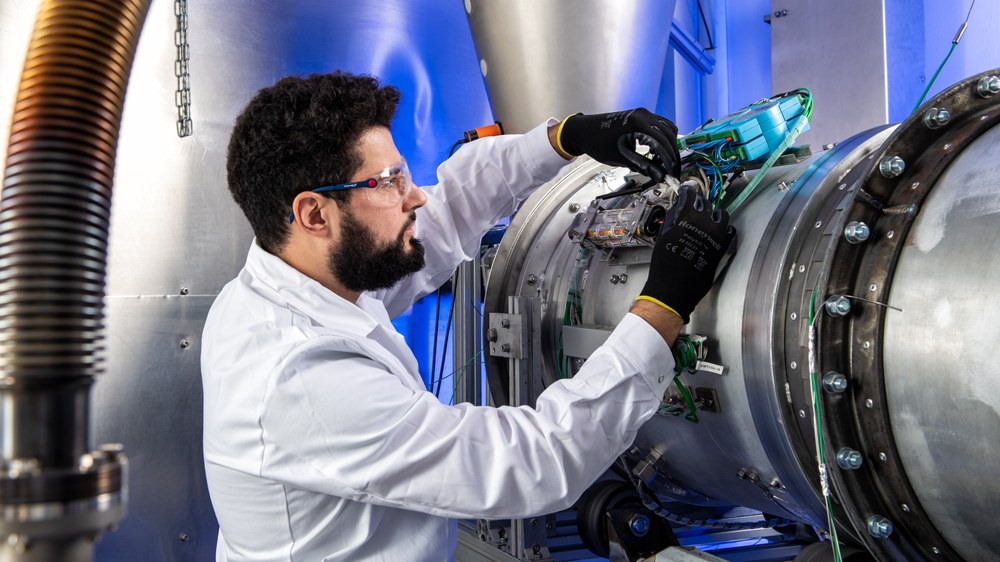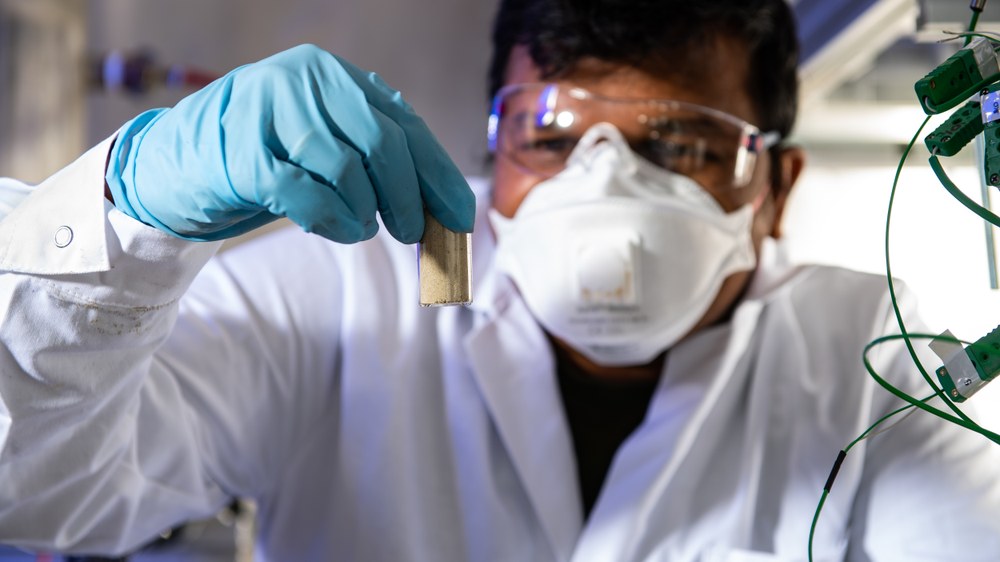Such processes are being investigated at the Institute of Future Fuels, where the focus is on products such as cement, aluminium and fertilisers.
Cement
Cement production accounts for around eight per cent of total global CO2 emissions. The use of concentrating solar thermal energy in the calcination process makes it possible to replace fossil fuels that were previously used for this highly endothermic, i.e. heat-absorbing, reaction to generate temperatures of 900 - 950 degrees Celsius. The result: high-quality quicklime sustainably produced with solar energy as the main component of cement. We were able to successfully demonstrate this in the SOLPART project.
The so-called process-related emissions, which come directly from the calcination reaction and account for up two thirds of total emissions, can also be avoided. This also requires the integration of carbon dioxide capture technologies into the cement process. One possibility here is to utilise the calcium looping cycle, which is being investigated in simulations and experiments at the Institute of Future Fuels in the CALyPSO and CemSol projects.

ingema, DLR
Sunlight for the production of ammonia-based fertilisers

DLR / Unsplash
Worldwide, the production of nitrogen-based fertilisers is responsible for a good two percent of global CO2-equivalent emissions. The raw materials for the production of ammonia (NH3) are nitrogen (N) and oxygen (O2). The production of nitrogen via cryogenic air separation in turn releases significant amounts of CO2. In the SESAM research project, we have analysed a new process that uses concentrating solar thermal energy as a heat source and is therefore CO2-neutral. This utilises redox cycle processes, which run at the required temperatures of 350 - 900 degrees Celsius. Another advantage: ammonia can be used as a CO2-neutral fuel, for example for shipping.
Our project video explains the concept of this process:

DLR project SESAM: Producing high-purity nitrogen with solar energy
Your consent to the storage of data ('cookies') is required for the playback of this video on Youtube.com. You can view and change your current data storage settings at any time under privacy.
Metals
One of the most important metals used in industry, especially for lightweight construction, is aluminium. The demand for aluminium is constantly increasing, as is primary production, which is associated with the mining of bauxite. As a result, the sources with the highest purity of bauxite are drying up and production is becoming more energy and emission-intensive, as the aluminium has to be extracted from less pure sources. A transition to the recycling of aluminium is therefore essential, especially as the secondary aluminium produced in this way requires only 5 percent of the energy and generates only 5 percent of the emissions. Currently, around a third of aluminium is recycled. With further growth, the provision of energy will therefore become increasingly important. Here too, the required temperature of around 800 degrees Celsius can be provided by concentrating solar thermal energy.
Minerals
Other products made from minerals whose production requires temperatures of up to 1,000 degrees Celsius are magnesium oxide and zeolites based on kaolin. Magnesium oxide, for example, is a component of refractory products that are used to line furnaces. An intermediate step is the firing of magnesium carbonate at temperatures of 1,000 degrees Celsius. Zeolites are nanofilters that are used in catalytic converters and detergents. To produce them, rocks containing aluminium and silicon have to be fired at temperatures of 700 - 950 degrees Celsius. Only then do they acquire the structures that can be converted into filtering molecular sieves. CSP can therefore be used as an energy source for both processes.
Biochar as a carbon source
The thermochemical conversion of biomass enables the production of valuable energy products such as biochar, bio-oil and synthesis gas. These three products play a key role in the energy transition towards a carbon-neutral economy. Bio-oil and synthesis gas are used to produce synthetic fuels, among other things, while biochar can serve as a carbon source for industrial processes that cannot do without it.
The PYSOLO1 project is investigating an innovative and flexible concept for integrating CSP into a biomass pyrolysis process - the conversion of biomass to gas, bio-oil and biochar by heating in the absence of oxygen. The PYSOLO concept will increase the efficiency of biomass conversion and reduce CO2 emissions, as the use of CSP will avoid the combustion of biomass as in the conventional process.
The further development of CSP and the provision of high-temperature heat in energy-intensive basic material production processes can make an important contribution to reducing global CO2 emissions. Fossil fuels are currently predominantly used in these processes, and alternatives are urgently needed to achieve climate neutrality. Through networking in our projects and a strong transfer from research to industry, we shorten innovation cycles and accelerate the implementation of technologies.
1 Funded by the European Union. Views and opinions expressed are however those of the author(s) only and do not necessarily reflect those of the European Union or CINEA. Neither the European Union nor the granting authority can be held responsible for them.




